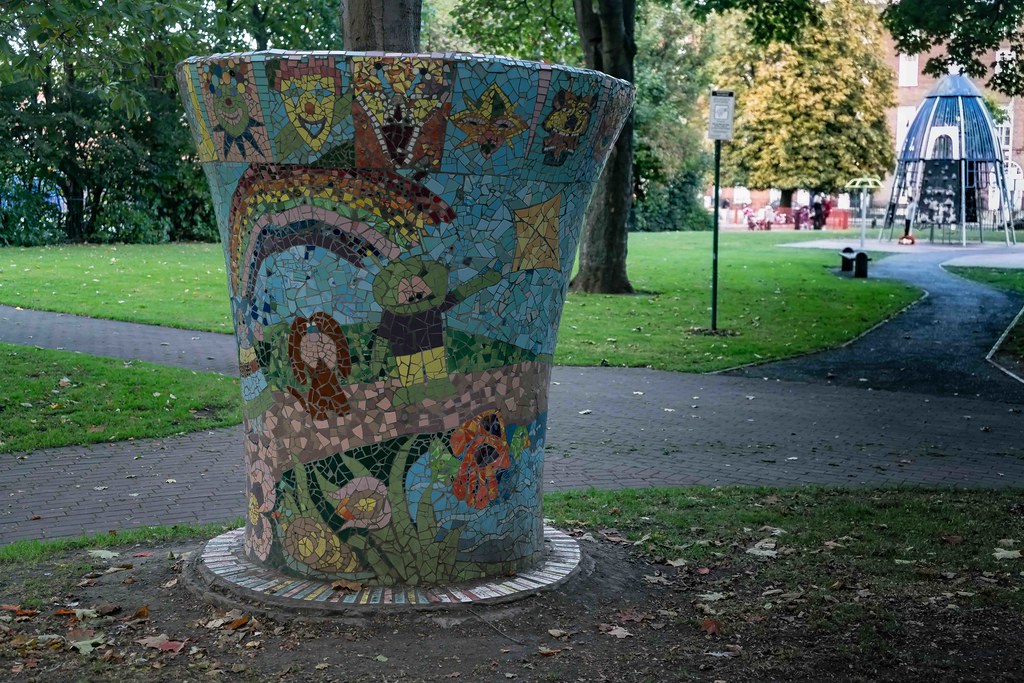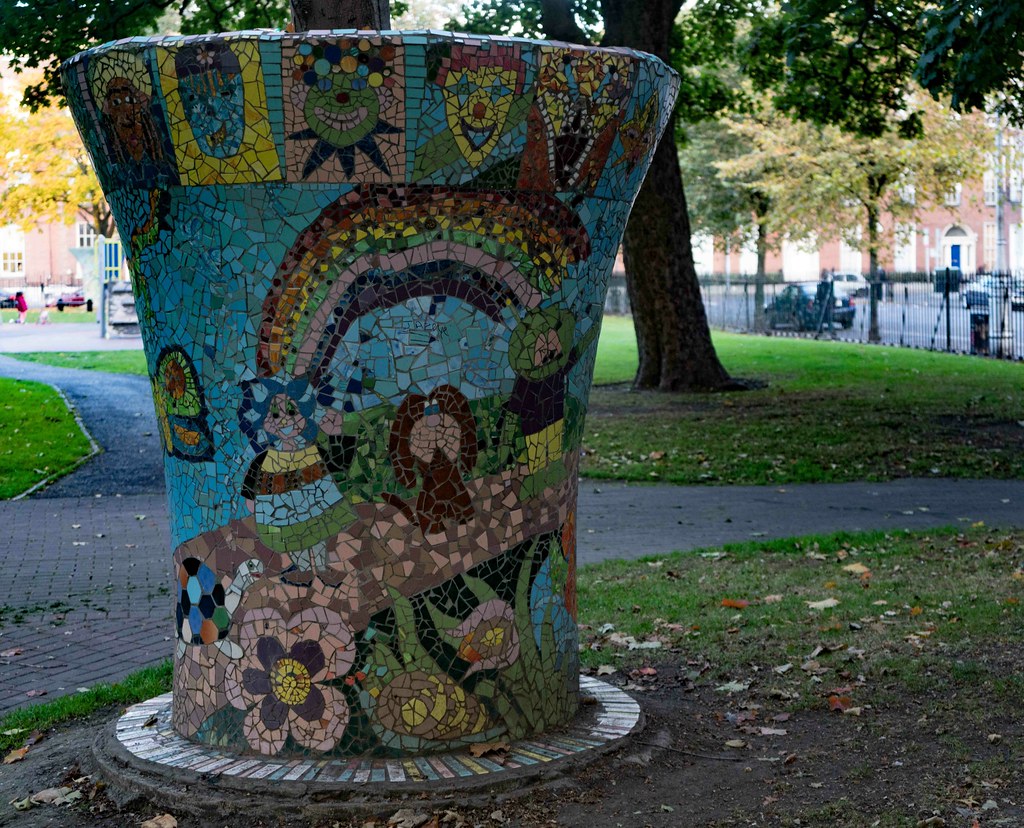
Custom Search
THE GREEN MENU OPTIONS ARE MOBILE FRIENDLY AND ARE FASTER SO THEY ARE RECOMMENDED. THE RED MENU OPTIONS ARE SOMEWHAT SLOWER DEPENDING ON YOUR DEVICE OR BROWSER AND ARE MORE SUITABLE FOR DESKTOPS AND LAPTOPS. THE BLUE OPTIONS ARE PAGE LINKS AND WILL BE PHASED OUT GOING FORWARD
PUBLIC ART IN MOUNTY SQUARE
LOADING
On Thursday I visited Mountjoy Square and for some reason a taxi driver took exception to me taking photographs even though he or his car could not have been included in any of my photographs. This happens on a regular basis and you are invited to draw your own conclusions as to why taxi drivers are concerned about appearing in photographs.
Last year, Dublin City Council published a new plan for the restoration of the historic park, the largest green space in the Dublin 1 area, which was produced following a joint study involving the Mountjoy Square Society and Dublin City Council. The plan provides for the full regeneration of the park and enhancing its facilities as a public amenity, and will be carried out on a phased basis. This will be dependent on the support of all current users of the park and the relocation of a number of facilities based within it. The goal is to restore the 200-year old park as a prime recreational space both for those who live and work on thesquare and the broader community.
The Park was originally intended to have St. George's Church sited centrally within, this idea was abandoned in favour of a central garden. In 1801 a commission involving local residents was formed to prepare a scheme for the garden which would involve the levelling, enclosure and cultivation of what was a mound of waste ground, to a design by John Sutherland. A parliamentary bill was introduced and approved, contracts were agreed for the levelling, laying of footpaths, construction of railings with plinth wall, the erection of 80 globe irons to light the interior, the railing specification included the provision of four locking gates of equal size, a cultivation contract involved trenching, tree planting, grassing, gravelling and finishing, the total cost was about £3,500 paid by means of a rate on residents. The garden was finished in June 1805 and each house was given a key and advised to look after the garden, while a gardener and assistant were employed by the Mountjoy Square Commissioners.
Dublin City has a high concentration of public art, both in its streets and open spaces, and integrated into its buildings. In the Mountjoy Square Architectural Conservation Area, traditional, freestanding public art is limited to the Park. This comprises concrete mosaic structures around the base of two mature trees sited along the eastern and western boundaries, a small stone sculpture in the landscaped area and graffti artistry on the rear elevation of the community centre.
Last year, Dublin City Council published a new plan for the restoration of the historic park, the largest green space in the Dublin 1 area, which was produced following a joint study involving the Mountjoy Square Society and Dublin City Council. The plan provides for the full regeneration of the park and enhancing its facilities as a public amenity, and will be carried out on a phased basis. This will be dependent on the support of all current users of the park and the relocation of a number of facilities based within it. The goal is to restore the 200-year old park as a prime recreational space both for those who live and work on thesquare and the broader community.
The Park was originally intended to have St. George's Church sited centrally within, this idea was abandoned in favour of a central garden. In 1801 a commission involving local residents was formed to prepare a scheme for the garden which would involve the levelling, enclosure and cultivation of what was a mound of waste ground, to a design by John Sutherland. A parliamentary bill was introduced and approved, contracts were agreed for the levelling, laying of footpaths, construction of railings with plinth wall, the erection of 80 globe irons to light the interior, the railing specification included the provision of four locking gates of equal size, a cultivation contract involved trenching, tree planting, grassing, gravelling and finishing, the total cost was about £3,500 paid by means of a rate on residents. The garden was finished in June 1805 and each house was given a key and advised to look after the garden, while a gardener and assistant were employed by the Mountjoy Square Commissioners.
Dublin City has a high concentration of public art, both in its streets and open spaces, and integrated into its buildings. In the Mountjoy Square Architectural Conservation Area, traditional, freestanding public art is limited to the Park. This comprises concrete mosaic structures around the base of two mature trees sited along the eastern and western boundaries, a small stone sculpture in the landscaped area and graffti artistry on the rear elevation of the community centre.



